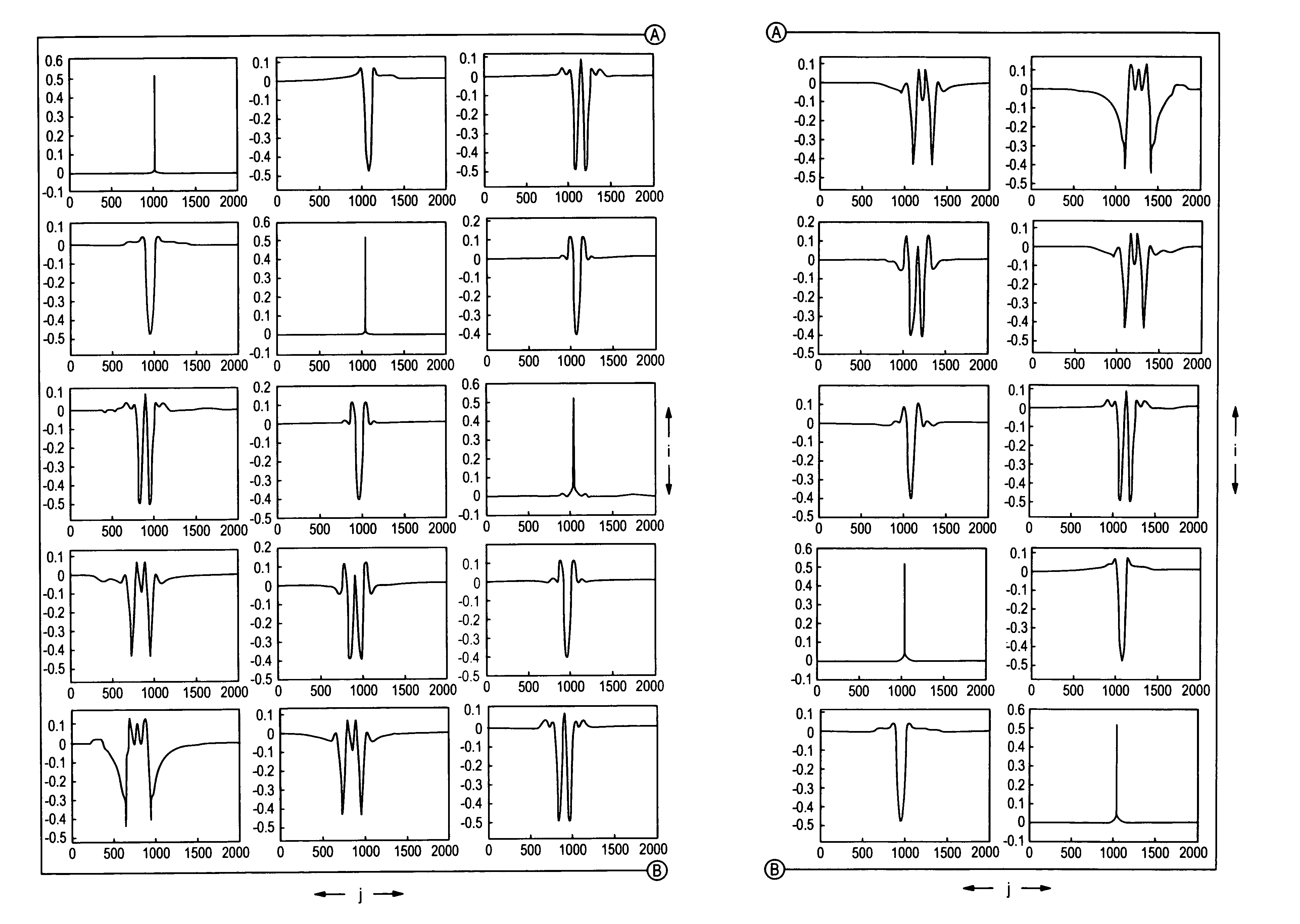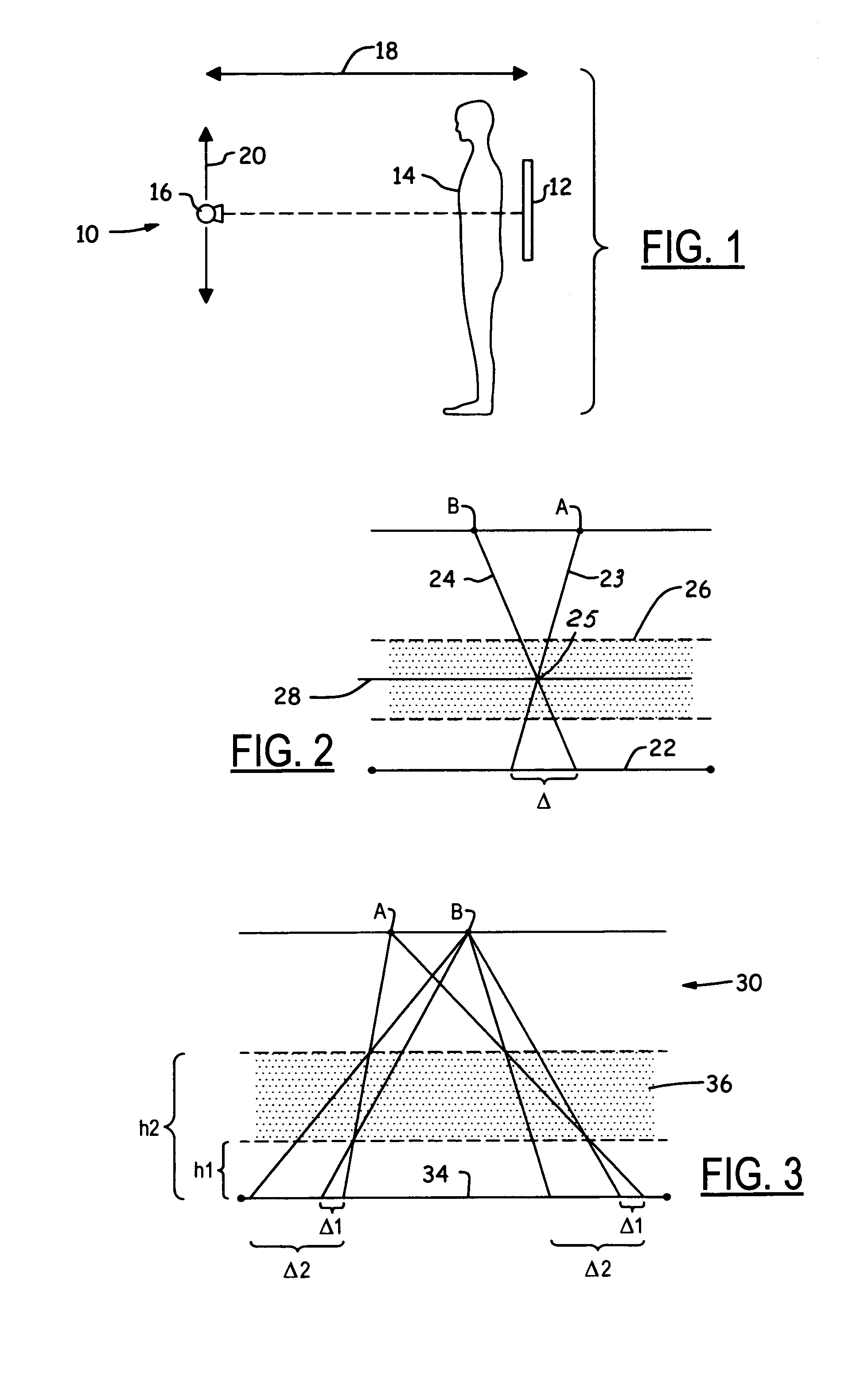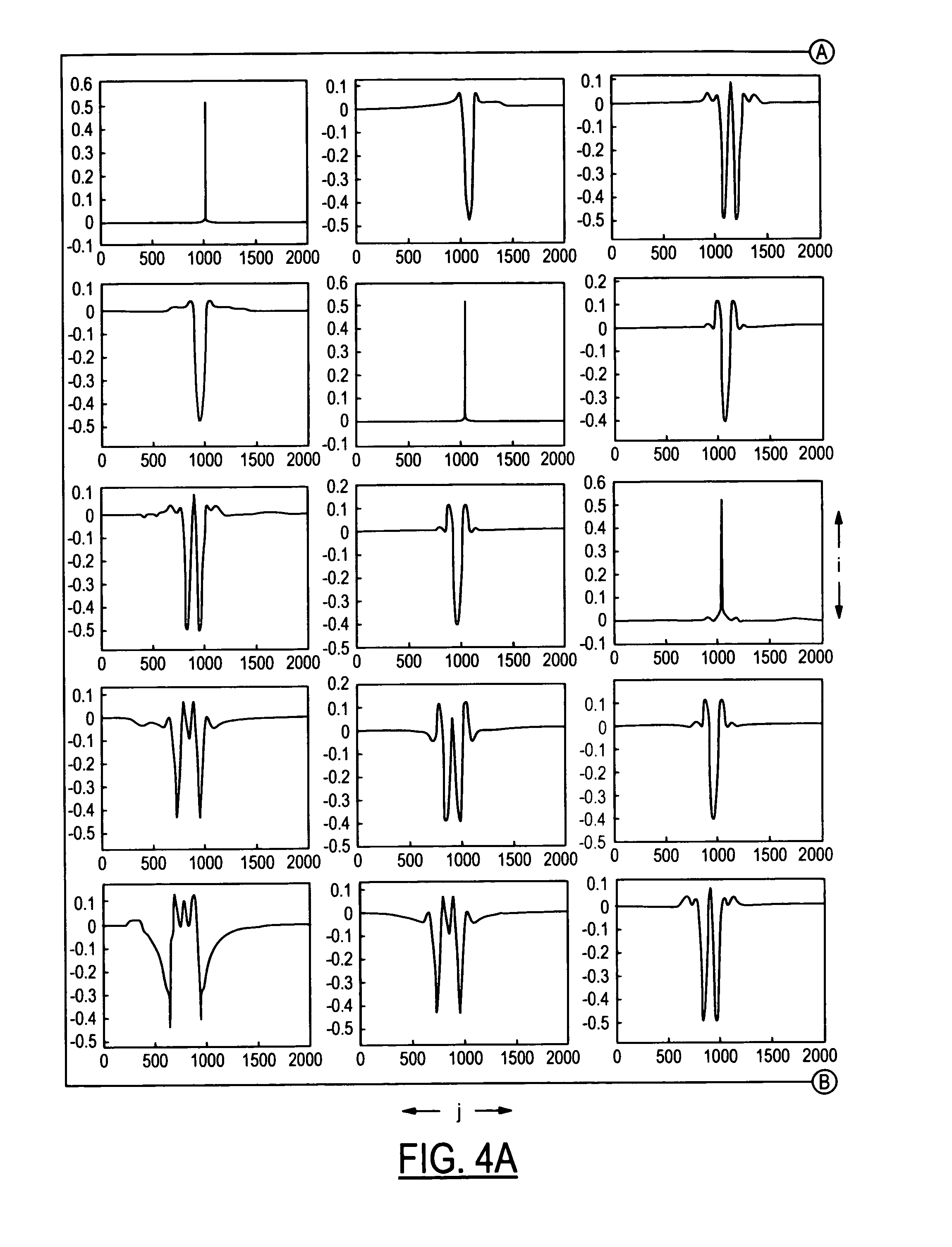Non-iterative algebraic reconstruction technique for tomosynthesis
a reconstruction technique and algebraic reconstruction technology, applied in the field of digital imaging, can solve the problems of difficult to solve reconstruction problems, difficult to integrate artifact management strategies in known algorithms of the prior art, and general computational intensive and/or inflexible use algorithms, etc., to achieve good image quality, improve the quality of reconstructed images, and reduce computational costs
- Summary
- Abstract
- Description
- Claims
- Application Information
AI Technical Summary
Benefits of technology
Problems solved by technology
Method used
Image
Examples
Embodiment Construction
[0017]Digital tomosynthesis is a three dimensional (3D) x-ray imaging technique, where typically only a few projection radiographs are acquired for varying positions of the x-ray tube with respect to the imaged object and the x-ray detector. FIG. 1 depicts an exemplary tomosynthesis system 10 used in a wall stand system for chest / lung imaging. In particular, the detector 12 and the imaged object (i.e., the patient) 14 are stationary, while the x-ray tube 16 is movable along a linear trajectory 20 at a constant distance 18 from the detector plane, in order to acquire projections from different view angles. The detector consists in this example of 2048×2048 pixels, with a pixel size of 200×200 μm, which translates into a detector size of about 41 by 41 cm. The tube-detector distance 18 (at the central tube position with respect to the detector) is about 180 cm, and the total range of motion of the tube is generally between about 31.5 and 131.0 cm. This corresponds to an angular range ...
PUM
| Property | Measurement | Unit |
|---|---|---|
| size | aaaaa | aaaaa |
| size | aaaaa | aaaaa |
| distance | aaaaa | aaaaa |
Abstract
Description
Claims
Application Information
 Login to View More
Login to View More - R&D
- Intellectual Property
- Life Sciences
- Materials
- Tech Scout
- Unparalleled Data Quality
- Higher Quality Content
- 60% Fewer Hallucinations
Browse by: Latest US Patents, China's latest patents, Technical Efficacy Thesaurus, Application Domain, Technology Topic, Popular Technical Reports.
© 2025 PatSnap. All rights reserved.Legal|Privacy policy|Modern Slavery Act Transparency Statement|Sitemap|About US| Contact US: help@patsnap.com



